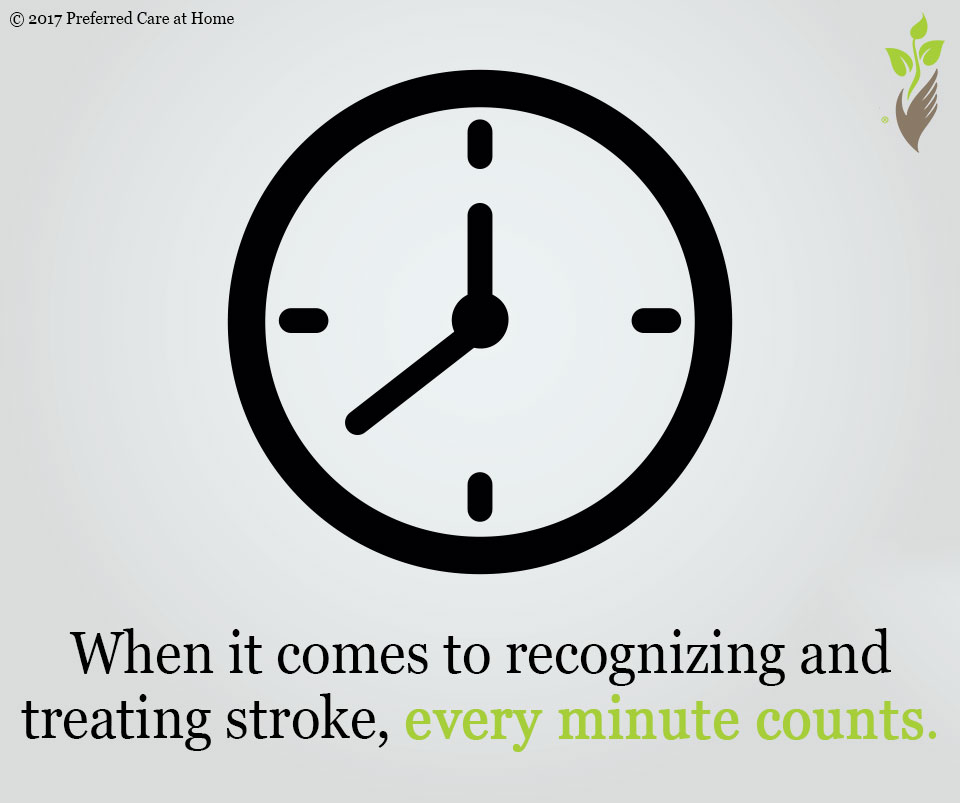4 Things You Should Understand About Stroke
Published March 31, 2017 by R. Bradley Robinson, M.D. in Senior Health & Wellness

“Early detection and treatment of a stroke are crucial for the best outcome, here are 4 important things you should know about stroke…”
Every year in the United States, around 800,000 individuals suffer from a stroke. While the majority of strokes occur in people over 65 years of age, strokes can occur at any age. Because early detection and treatment of a stroke are crucial for the best outcome, here are 4 important things you should know about stroke.
1. It is Important to Act F.A.S.T.
When it comes to recognizing and treating stroke, every minute truly counts. According to the CDC, the following test can be used whenever you think someone may be having a stroke.
F-Face: Ask the person to smile, does one side of the face droop?
A-Arms: Ask the person to raise both arms? Does one arm drift downward?
S-Speech: Ask send to repeat a simple phrase. Is the speech slurred or strange?
T-Time: If you see any of the signs, call 9-1-1 right away. Note the time the symptoms first appear.
2. Treatment is Based on a Time Window After Symptoms Begin
Most strokes are actually ischemic strokes in which an artery to the brain is occluded by a clot. One of the main treatments for ischemic stroke is called Tissue Plasminogen Activator, commonly referred to as the “clot-buster.” This is given through an IV, and actively dissolves the clot. A serious side effect of this drug is that it can cause bleeding, including bleeding into the brain. Because of this, it is typically only available for use within the first 4.5 hours after stroke symptoms begin. Another treatment involves using wires and devices within the blood vessels to find the clot and manually remove it from the artery. This procedure also has risks and is typically reserved for use within the first 6 hours.
3. Don’t Ignore a TIA.
By definition, the damage to brain tissue caused by a stroke is irreversible, though physical therapy may help one regain some functional ability. On the other hand, a TIA (transient ischemic attack) is a temporary condition involving stroke symptoms that resolve after a short amount of time. If you experience a TIA, it is important to see your physician right away, even if you return to feeling completely normal. Consider the TIA to be a warning sign that a more serious and irreversible stroke may occur in the future.
4. You Can Lower Your Risk for Stroke.
It is true that there are some risk factors for stroke that you have zero control over, such as increasing age. However, other risk factors include high blood pressure, high cholesterol, heart disease, diabetes, and obesity. If you have one of these medical conditions, it is important to see your physician regularly to optimize treatment and keep these diseases in check. In addition, avoiding smoking and excessive drinking, eating a healthy diet, and exercising regularly are all important ways to reduce your risk for stroke.
If you have questions about senior home
care services or if you want to start care:
Related Posts

January 27, 2025
Is There a Food Allowance Card for Seniors?
Jody Guerrieri, RN.

January 27, 2025
What Causes Glassy Eyes in the Elderly?
Jody Guerrieri, RN.

January 27, 2025
What Age Is Considered a Senior Citizen?
Jody Guerrieri, RN.
Helping seniors age in place, with dignity & grace.